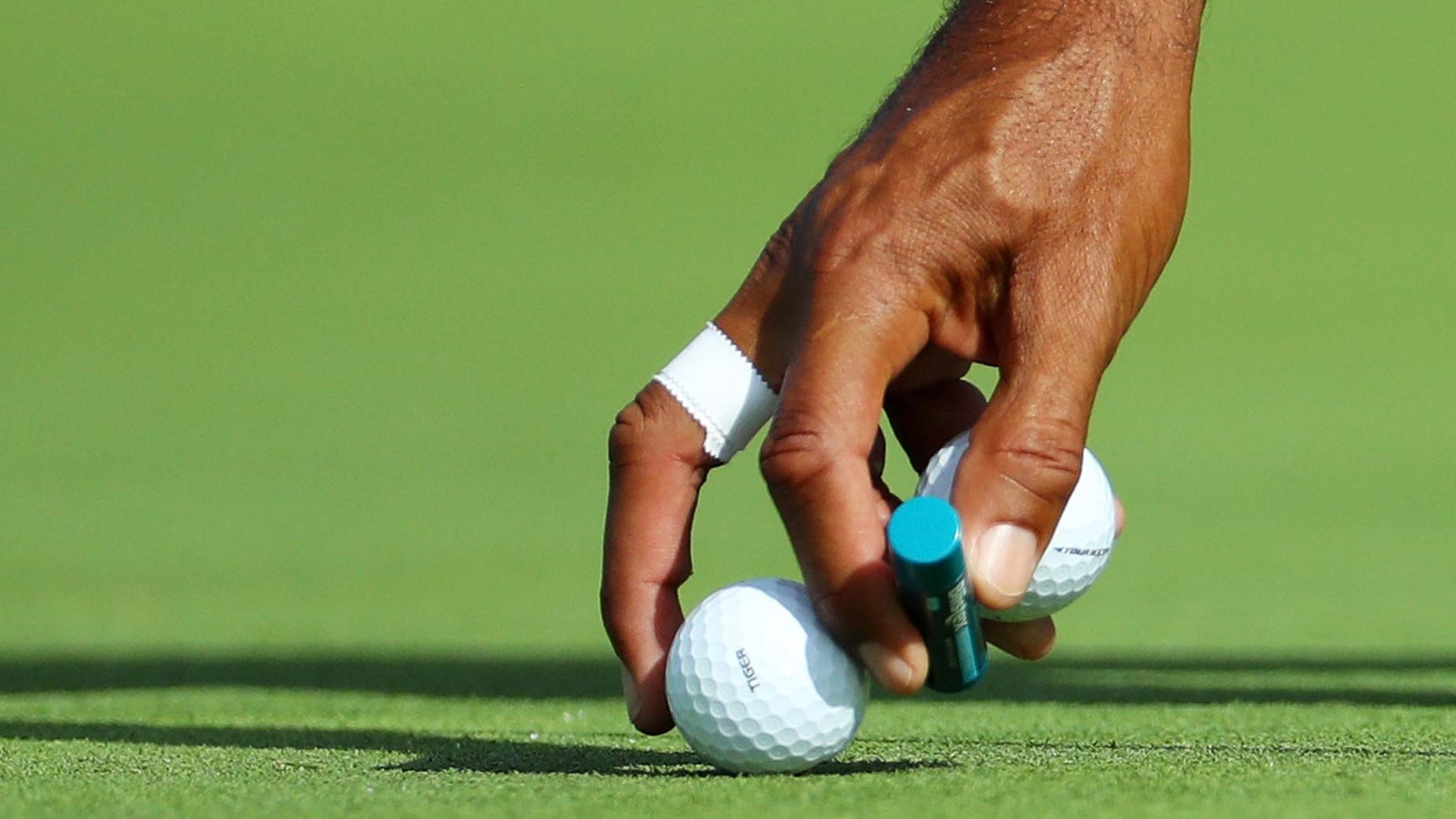Golf putting drills improve accuracy and consistency on the greens. They help golfers develop a reliable putting stroke.
Effective putting drills are essential for golfers seeking to enhance their performance. Practicing these drills regularly can significantly lower your scores and boost confidence. Common drills include the gate drill, which focuses on maintaining a straight putter path, and the clock drill, designed to improve distance control.
Another popular drill is the ladder drill, which helps with speed and accuracy. Incorporating these drills into your practice routine ensures better putting skills. Consistent practice leads to muscle memory and better performance during actual rounds. Keep your sessions focused and varied to see the best results.
Importance Of Putting Drills
Putting is a crucial part of golf. Practicing putting drills can significantly improve your game. These drills help refine your technique, build confidence, and lower your scores.
Key To Lower Scores
Effective putting drills are the key to lower scores in golf. By focusing on your putting technique, you can shave strokes off your game. Here are a few drills to help you:
- Gate Drill: Set up two tees a putter’s width apart. Practice putting through the gate.
- Distance Control Drill: Place tees at different distances. Putt to each tee with the goal of stopping the ball near the tee.
- Circle Drill: Arrange balls in a circle around the hole. Putt each ball into the hole.
These drills target specific aspects of putting. They help improve precision, control, and consistency. Lowering your putt count can dramatically reduce your overall score.
Building Confidence
Building confidence is essential in golf. Consistent practice with putting drills builds this confidence. Try these drills:
- One-Handed Putting: Use only your dominant hand. This drill helps you feel the stroke better.
- Blindfolded Putting: Putt with your eyes closed. Focus on the feel and sound of the putt.
- Pressure Putt: Set a target number of successful putts. Increase the pressure to perform under stress.
Confidence on the green translates to confidence in your game. Regular practice with these drills will make you more comfortable with your putter. This comfort leads to better performance on the course.
Basic Putting Techniques
Mastering the basic putting techniques can significantly lower your golf score. A good putt requires proper grip, stance, and alignment. Let’s dive into these essential components.
Proper Grip
The grip is the foundation of your putt. Holding the putter correctly ensures better control and accuracy. Below are the steps for a proper grip:
- Place your left hand on the putter grip.
- Wrap your right hand around, overlapping the left.
- Ensure your thumbs point down the shaft.
- Maintain a light, relaxed grip.
Using this grip promotes a smooth and consistent stroke.
Stance And Alignment
Your stance and alignment impact the direction and distance of the putt. Follow these tips for a solid stance:
- Stand with your feet shoulder-width apart.
- Align your body parallel to the target line.
- Position the ball slightly forward in your stance.
- Bend your knees slightly and keep your weight balanced.
Proper alignment ensures the ball travels on the intended path. Use alignment aids on the green if needed.
Practice these basic techniques to improve your putting skills. Consistent practice builds confidence and precision on the green.
Essential Putting Drills
Improving your putting skills is crucial for a better golf game. Essential putting drills help you enhance accuracy, speed, and consistency. Practicing these drills regularly will make you a confident putter.
Gate Drill
The Gate Drill is perfect for improving your putting accuracy. Set up two tees just wider than your putter’s head. Place a ball in the middle. The goal is to putt the ball without hitting the tees.
- Place two tees on the green.
- Align the ball between the tees.
- Take your normal putting stance.
- Putt the ball through the “gate” without touching the tees.
Repeat this drill to master your stroke path. It helps with consistency and control.
Clock Drill
The Clock Drill is excellent for developing putting speed and accuracy from different distances. Imagine a clock around the hole. Place balls at various positions (12, 3, 6, and 9 o’clock).
- Set up 4 balls around the hole.
- Place them at equal distances (3 feet).
- Putt each ball, aiming to sink it in one stroke.
Gradually increase the distance as you improve. This drill builds confidence in short putts and helps with distance control.

Credit: golf.com
Advanced Putting Drills
Mastering advanced putting drills can significantly enhance your golf performance. These drills fine-tune your accuracy, control, and confidence on the green. Let’s explore some advanced techniques that can elevate your game.
One-handed Drill
The One-Handed Drill focuses on improving your stroke consistency. This drill isolates each hand’s role in the putting process.
- Place a ball on the green.
- Hold your putter with only your dominant hand.
- Practice putting the ball to a target.
- Repeat with your non-dominant hand.
This drill helps you understand the contribution of each hand. It can uncover weaknesses and improve overall control.
Distance Control Drill
The Distance Control Drill is essential for mastering speed and distance. It ensures you can control the ball over various lengths.
| Step | Description |
|---|---|
| 1 | Place three balls at different distances (5, 10, 15 feet). |
| 2 | Attempt to putt each ball to the same target. |
| 3 | Focus on maintaining a consistent stroke. |
| 4 | Repeat the drill with varying distances. |
This drill enhances your ability to judge and control distance. It is crucial for reducing three-putts and improving your score.
Equipment For Putting Practice
Practicing your golf putting requires the right equipment. The right tools help you improve faster. Below are essential items for effective putting practice.
Choosing The Right Putter
Choosing the right putter is crucial. You need a putter that fits your stroke. A well-fitted putter can improve accuracy. Consider the following factors:
- Length: A putter that matches your height.
- Weight: Choose a weight that feels comfortable.
- Grip: Ensure the grip feels good in your hands.
Using Alignment Aids
Alignment aids help you aim better. They guide your putts towards the hole. Here are some common alignment aids:
| Alignment Aid | Purpose |
|---|---|
| Alignment Sticks | Help you align your body and putter |
| Putting Mirror | Ensures your eyes are over the ball |
| Chalk Line | Draws a straight line for practice |
Using these tools can make your practice more effective. They help you develop muscle memory. Consistent practice with alignment aids leads to better putting.
Mental Strategies
Mastering the mental side of putting can transform your golf game. Simple strategies can help you stay focused and confident. Explore visualization and routine development techniques to sharpen your skills.
Visualization Techniques
Visualization can improve your putting accuracy. Imagine the ball’s path before you take the shot. See it rolling into the hole. This helps your brain connect with your body.
Follow these steps:
- Find a quiet spot before you practice.
- Close your eyes and take deep breaths.
- Picture the green and the hole.
- Visualize the ball rolling smoothly.
Practice this daily to build confidence. Your mind will soon guide your hands.
Routine Development
Consistency is key in putting. Develop a simple routine to calm your mind. A solid routine reduces pressure and builds muscle memory.
Consider the following steps for an effective routine:
- Stand behind the ball and read the green.
- Choose your line and commit to it.
- Take a practice stroke to feel the motion.
- Step up to the ball with confidence.
- Align your putter and focus on your target.
- Execute the stroke with a smooth motion.
Repeat this routine every time you putt. It creates consistency and boosts your confidence.
Common Putting Mistakes
Many golfers struggle with putting. Small mistakes can lead to missed putts. Knowing these mistakes can improve your game. Let’s explore the most common putting mistakes.
Overthinking The Putt
Overthinking can ruin a good putt. Many golfers freeze up. They focus too much on technique. This can lead to hesitation. A relaxed mind leads to a smooth stroke.
- Trust your instincts. Your first read is often correct.
- Practice mindfulness. Stay calm and focused.
- Set a routine. Stick to it for every putt.
Inconsistent Stroke
An inconsistent stroke can miss the target. Consistency is key in putting. A steady stroke ensures accuracy.
| Common Causes | Solutions |
|---|---|
| Changing grip pressure | Maintain even pressure |
| Varying backstroke length | Keep backstroke consistent |
| Uneven follow-through | Focus on a smooth follow-through |
Practice drills can help. Use mirrors or video feedback. These tools ensure a consistent stroke.

Credit: golf.com
Tracking Your Progress
Tracking your progress in golf putting drills is crucial for improvement. By monitoring your performance, you can identify strengths and weaknesses. This helps in setting realistic goals and achieving them efficiently.
Keeping A Putting Journal
A putting journal is a valuable tool. It allows you to record your daily practice sessions. Write down the drills you completed and your results. Note any observations or changes in your technique.
Here are some items to include in your journal:
- Date: The day you practiced.
- Drills: The specific putting drills you performed.
- Results: Your performance metrics (e.g., number of successful putts).
- Observations: Any notes on your technique or thoughts during practice.
Setting Realistic Goals
Setting realistic goals is essential for steady progress. Start by identifying areas that need improvement. Set short-term and long-term goals that are achievable.
Here is a simple table to help you plan your goals:
| Goal Type | Description | Timeline |
|---|---|---|
| Short-term | Improve accuracy in 3-foot putts | 2 weeks |
| Long-term | Reduce 3-putts per round | 3 months |
Here are some tips for setting goals:
- Be specific. Define exactly what you want to achieve.
- Be realistic. Set goals within your current skill level.
- Track your progress. Regularly update your journal.
Tracking your progress with a journal and realistic goals helps you improve. Stay consistent and watch your putting skills grow.
Frequently Asked Questions
How To Improve Putting In Golf?
Practice regularly on the putting green. Focus on alignment and stroke consistency. Use drills like the gate drill. Maintain a relaxed grip. Analyze and adjust based on feedback.
How Do Pro Golfers Practice Putting?
Pro golfers practice putting by focusing on alignment, speed control, and consistency. They use drills, training aids, and varied distances.
How Best To Practice Putting?
Practice putting on a flat surface. Focus on your stance and grip. Use alignment aids. Vary distances. Track your progress.
How Did Tiger Practice Putting?
Tiger Woods practiced putting through intense drills, focusing on alignment, distance control, and consistency. He used various training aids and repetitive routines.
Conclusion
Mastering golf putting drills improves your game significantly. Practice these drills consistently to enhance precision and control. Remember, dedication and patience are key. Your putting skills will soon reflect your hard work. Keep practicing, stay focused, and enjoy the journey to becoming a better golfer.
Happy golfing!





